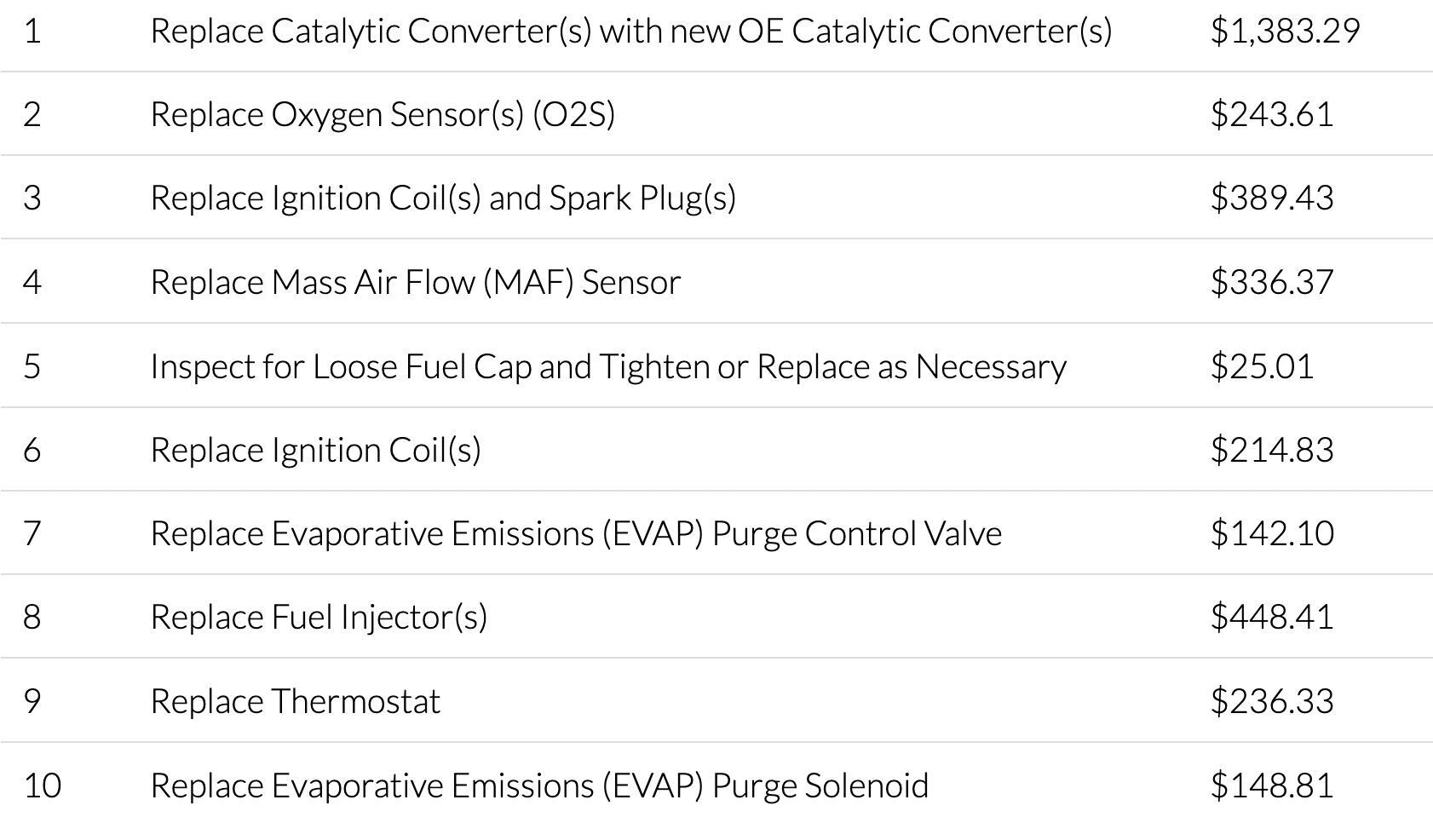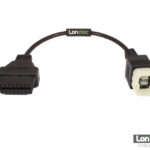For automotive technicians and fleet managers, deciphering Diagnostic Trouble Codes (DTCs) is a crucial skill for maintaining vehicle health and performance. These codes, generated by a vehicle’s onboard computer, pinpoint potential issues, enabling timely repairs and preventing more extensive damage. While OBD2 codes may seem like a jumble of letters and numbers, each character is deliberately chosen to convey specific information. This article delves into the structure of OBD2 DTCs, with a particular focus on understanding the meaning and implications of encountering “1” as the second digit in these codes.
Understanding OBD2 Diagnostic Trouble Codes
OBD2, or On-Board Diagnostics II, is the standard mandated for all vehicles sold in the United States after 1996. This system is designed to monitor various vehicle systems, from the engine and transmission to emissions controls and more. When the OBD2 system detects an anomaly, it illuminates the check engine light (malfunction indicator light) and stores a corresponding DTC in the vehicle’s computer memory.
These DTCs are accessed using a diagnostic scanner connected to the vehicle’s OBD2 port. But simply retrieving the code is only the first step. To effectively diagnose and repair the issue, understanding the anatomy of an OBD2 code is essential.
Breaking Down the OBD2 Code Structure
An OBD2 DTC is composed of five characters, each holding a piece of the diagnostic puzzle. Let’s dissect each character to fully grasp their meaning:
The First Digit: The System Category
The first character of an OBD2 code is always a letter, indicating the primary system affected:
- P (Powertrain): This signifies an issue within the engine, transmission, fuel system, or related components that manage the vehicle’s power delivery.
- C (Chassis): “C” codes point to problems in the chassis systems, which include steering, suspension, braking, and anti-lock braking systems (ABS).
- B (Body): “B” codes relate to issues within the vehicle’s body, encompassing components located in the passenger compartment, such as power windows, seats, and airbags.
- U (Network or Undefined): “U” codes indicate communication problems within the vehicle’s computer network or issues with modules that the OBD system manages.
The Second Digit: Generic vs. Enhanced Codes – Focusing on ‘1’
The second digit in an OBD2 code is numeric and plays a critical role in defining the code’s specificity. It can be either “0” or “1”:
-
0 (Generic or Standard SAE Code): A “0” as the second digit indicates a generic OBD2 code. These codes are standardized by the Society of Automotive Engineers (SAE) and are common across all vehicle makes and models compliant with OBD2. They represent issues that are considered universally relevant and are defined by industry standards.
-
1 (Enhanced or Manufacturer-Specific Code): A “1” in the second position signifies an enhanced OBD2 code, also known as a manufacturer-specific code. This is where our focus keyword comes into play. When you see a “1” as the second digit, it means the DTC is specific to the vehicle manufacturer. These codes are not part of the generic SAE standards and are used by manufacturers to provide more detailed diagnostics for their specific vehicle systems and components.
 P04020 DTC code
P04020 DTC code
Third, Fourth, and Fifth Digits: Further Specificity
The remaining three digits of an OBD2 code further refine the diagnosis:
-
Third Digit (Subsystem): If the second digit is “0” (generic code), the third digit (0-7) specifies the vehicle subsystem affected. For example, “0” often relates to fuel and air metering, “1” to fuel and air metering (injection system), “3” to ignition systems, and so on.
-
Fourth and Fifth Digits (Specific Fault Index): These final two digits, ranging from 00 to 99, are known as the “Specific Fault Index.” They pinpoint the exact nature of the malfunction within the subsystem identified by the third digit.
Why ‘1’ as the Second Digit Matters: The Realm of Enhanced Codes
Encountering a “1” as the second digit in an OBD2 code is a crucial indicator for technicians. It immediately signals that the diagnostic process requires a deeper dive beyond generic OBD2 information. Here’s why understanding manufacturer-specific codes is so important:
-
Detailed Diagnostics: Manufacturer-specific codes provide a more granular level of detail compared to generic codes. Automakers use these codes to diagnose issues unique to their vehicle designs, technologies, and proprietary systems.
-
Accurate Repairs: Relying solely on generic OBD2 code interpretations when dealing with an enhanced code can lead to misdiagnosis and incorrect repairs. Manufacturer-specific codes guide technicians to the precise component or system causing the problem, ensuring accurate and effective repairs.
-
Accessing Manufacturer Resources: When facing a code with “1” as the second digit, technicians often need to consult manufacturer-specific resources. This may include:
- Repair Manuals: Factory service manuals are invaluable for detailed explanations of manufacturer-specific codes and diagnostic procedures.
- Technical Service Bulletins (TSBs): TSBs issued by manufacturers often address known issues and provide specific repair instructions related to enhanced codes.
- Online Databases: Subscription-based online databases for professional technicians often include comprehensive manufacturer-specific code definitions and troubleshooting guides.
- Dealership Support: In some cases, contacting a dealership or a specialist familiar with the vehicle brand may be necessary to fully understand and resolve issues related to manufacturer-specific codes.
Examples and Implications of Manufacturer-Specific Codes
While generic codes like P0420 (Catalyst System Efficiency Below Threshold) are widely understood, manufacturer-specific codes can vary significantly. For example, a manufacturer might use a “P1XXX” code range to indicate specific transmission issues not covered by generic codes. Another automaker might use “C1XXX” codes to pinpoint unique problems within their advanced stability control system.
The implication for technicians is clear: when a “1” appears as the second digit, generic code readers alone might not be sufficient. Advanced scan tools that can access manufacturer-specific data and databases become essential. Furthermore, a strong understanding of the specific vehicle make and model is crucial for effective diagnosis and repair.
Accessing and Interpreting Enhanced OBD2 Codes
To effectively work with manufacturer-specific codes, technicians need the right tools and resources:
-
Advanced Scan Tools: While basic OBD2 scanners can read generic codes, professional-grade scan tools are capable of accessing and interpreting manufacturer-specific codes. These tools often come with built-in databases or subscription services that provide code definitions and troubleshooting steps.
-
Vehicle-Specific Diagnostic Software: Many manufacturers offer proprietary diagnostic software that provides the most in-depth access to vehicle systems, including detailed information about enhanced codes and guided diagnostic procedures.
-
Online Repair Information Systems: Platforms like ALLDATA, Mitchell 1, and others provide access to a vast library of repair information, including manufacturer-specific code definitions, wiring diagrams, and repair procedures.
Best Practices for Handling Enhanced OBD2 Codes
For both automotive repair shops and fleet maintenance operations, effectively managing enhanced OBD2 codes is essential:
-
Invest in Professional Scan Tools: Equip your shop or maintenance facility with scan tools that can handle manufacturer-specific codes. This is a worthwhile investment for accurate diagnostics and efficient repairs.
-
Technician Training: Ensure your technicians are trained to recognize and understand the significance of manufacturer-specific codes. Training should include how to use advanced scan tools and access relevant repair resources.
-
Maintain Access to Repair Information: Subscribe to online repair information systems and ensure access to factory service manuals and TSBs for the vehicles you service.
-
Document and Share Knowledge: Create a system for documenting and sharing information about manufacturer-specific codes within your team. This can improve efficiency and reduce diagnostic time in the long run.
 Most common check engine vehicle repairs in the US
Most common check engine vehicle repairs in the US
Conclusion
Understanding the nuances of OBD2 DTCs, especially the significance of the second digit, is paramount for accurate vehicle diagnostics and effective repairs. When “1” appears as the second digit, it’s a clear signal that you’re dealing with a manufacturer-specific code. This requires a shift in approach, necessitating specialized tools, resources, and knowledge to correctly interpret and address the underlying issue. By recognizing and properly handling enhanced OBD2 codes, automotive professionals can ensure precise diagnoses, efficient repairs, and ultimately, greater customer satisfaction and vehicle reliability. For fleet managers, this translates to reduced downtime, optimized maintenance schedules, and a more dependable fleet operation.
